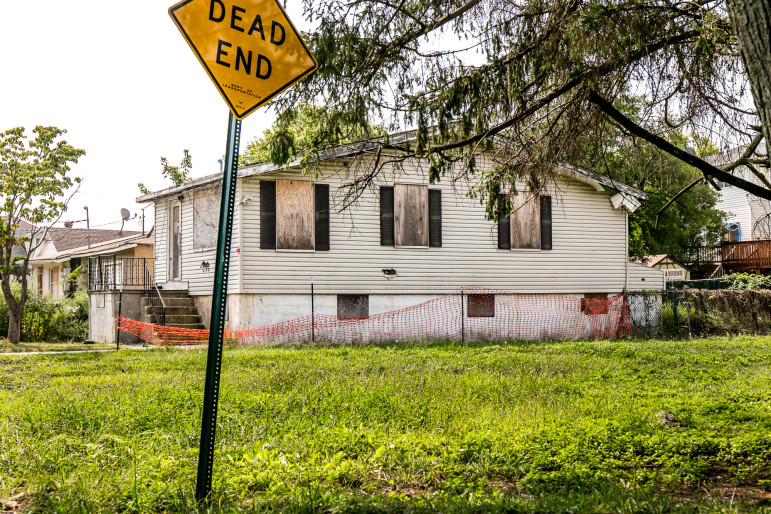
Adi Talwar
A home in the buyout area in Graham Beach, Staten Island.
It’s common on the streets of New York to see new neighborhoods rising from old ones before your very eyes, their horizons dotted by tower cranes and their sidewalks cluttered with construction fencing. Along the eastern shore of Staten Island, however, a very different process is now underway, triggered by Superstorm Sandy and hastened by government action. The tiny communities of Oakwood Beach, part of which is also known as Fox Beach, along with nearby Graham Beach and Ocean Breeze are being dismantled under a buyout program operated by NY Rising, a state initiative.
Sandy forced New York to reconsider its relationship to a sea that is projected to rise two to six feet by the year 2100. For the most part, the city has decided to defend in place—to continue to permit residential development near the water in places like the Rockaways, trusting a stricter building code and what will ultimately be a $20 billion array of protective engineering to keep the water from destroying homes and businesses. The decision to not abandon the waterfront is the rare policy position on which Mayor de Blasio and his predecessor Michael Bloomberg appear to agree.
But NYRising is a state program, one element of which is a scheme to purchase areas under serious threat of inundation where most residents want to get out. This was the case in Oakwood Beach, says Joseph Tirone, a Staten Island real-estate agent who owned an investment property there and organized the post-Sandy push for an escape plan. Some homeowners in that area of tiny cottages surrounded by marshes—many were summer bungalows that had become year-round residences—had been organizing since 1992 to engineer a mass relocation. After all, Oakwood Beach flooded not just during 100-year storms but whenever there was a decent rain, and when it wasn’t wet, there was the threat of bushfires. Tirone bought his property there five years before Sandy and he admits it wasn’t the best-researched buy. “I didn’t know how close to the water I was. I had no idea,” he says, “which was ridiculous.” Sandy left no room for delusion. “We had 200 people at the meeting” after the 2012 storm, Tirone says. When he asked who wanted out, “200 people raised their hands. No one expected that.”
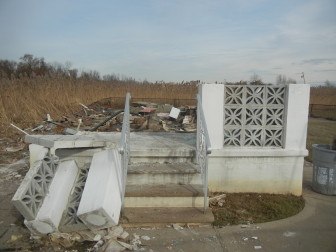
Jarrett Murphy
Damage from Superstorm Sandy in the Oakwood Beach area of Staten Island
Tirone says private citizens in Nashville, Tenn., who’d lived through regular river flooding and upstate New Yorkers who had survived Irene gave him valuable advice on the flaws in existing federal hazard mitigation programs. He credits Gov. Cuomo with showing creativity in creating a new, smoother approach, though Tirone wishes other Staten Island neighborhoods where there was strong support for a buyout could have been included.
As of Friday, NYRising had made 311 buyout offers in Oakwood Beach and 102 each in Graham Beach and Ocean Breeze. Just over 400 of those offers have been accepted. Most of the rest, state officials says, are in process, although there have been a handful of holdouts: people too attached to the property to leave, or who want more money, or who are deep in debt and awaiting foreclosure. The buyout program offers pre-storm value, and just under $190 million has been offered in total so far. Many takers have relocated on Staten Island, but some have moved on to Florida, Arizona or elsewhere, says Tirone.
NYRising is also active elsewhere in other parts of the state affected by Irene, Sandy or Tropical Storm Lee of 2011. In addition to the buyout program, there’s an acquisition initiative that auctions storm-affected properties to buyers willing to build resilient new structures. The buyout program aims instead to prevent any future development on the land it purchases. It will be years before most traces of human activity are gone from places like Oakwood Beach—sewer lines need to be ripped out and hydrants removed—but there are already signs of nature taking over, as demolished lots begin to grow over and wild turkeys patrol. -Jarrett Murphy
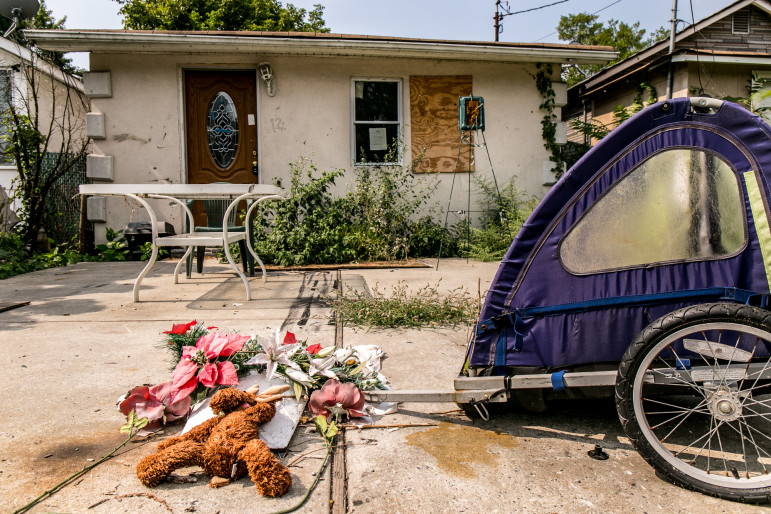
Adi Talwar
On Kissam Avenue

Adi Talwar
Reinforced dunes at edge of Oakwood Beach.
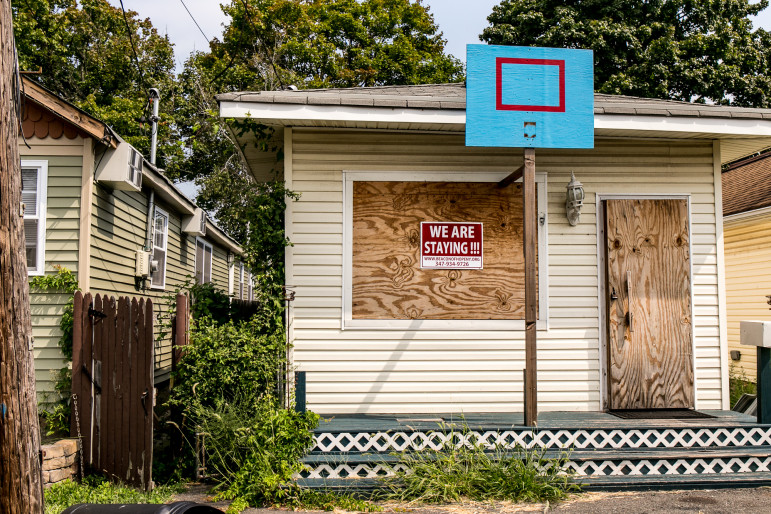
Adi Talwar
A home in Graham Beach.
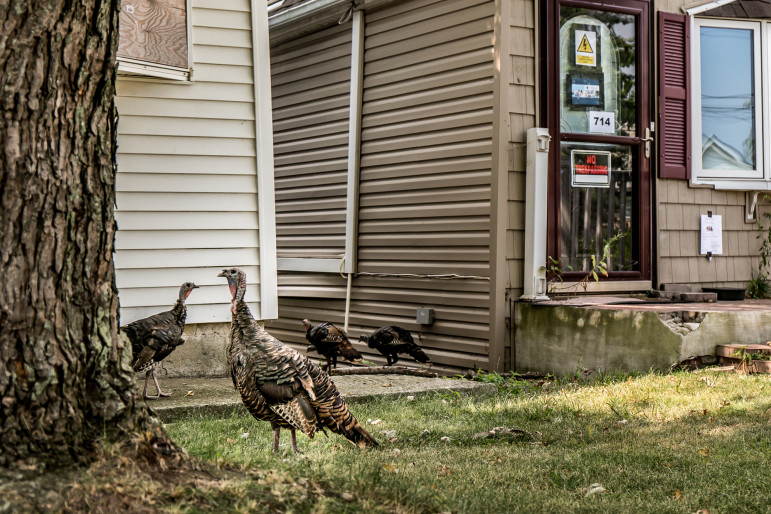
Adi Talwar
Buel Ave, Staten Island, New York.


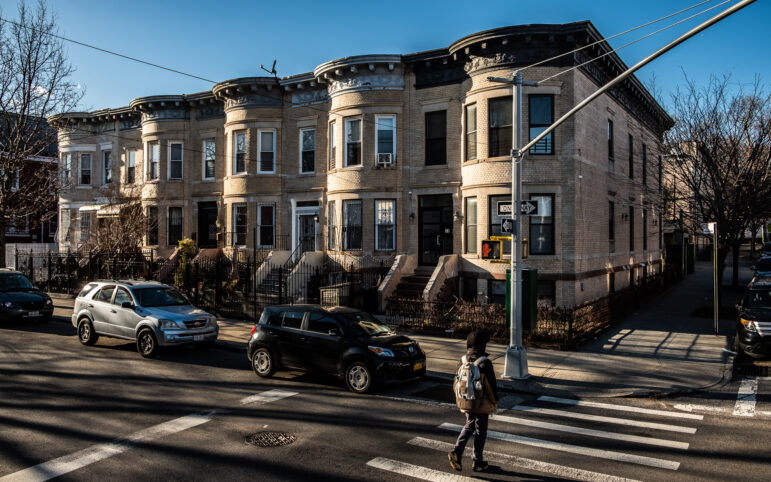
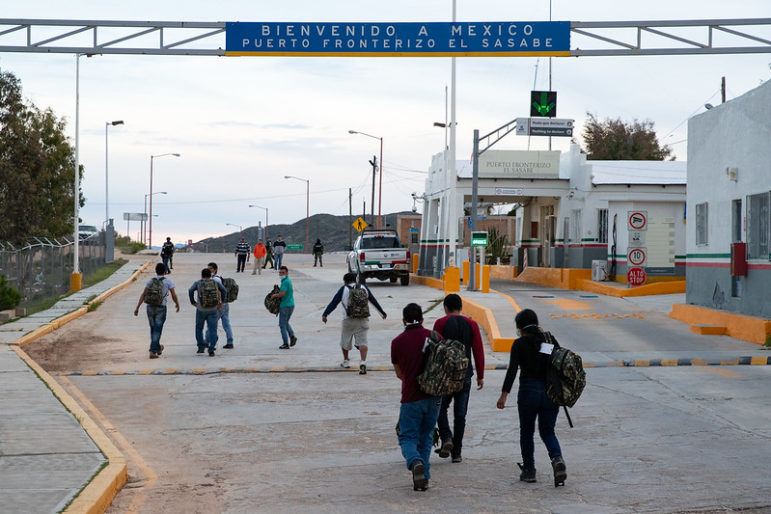





One thought on “Photo Essay: After Superstorm Sandy, Inside the Buyout Zone”
Oakwood Beach was a neighborhood of homes that should never have been built. Most homes were summer bungalows built in the early 20th century that were converted to year-round homes in the 1930s.